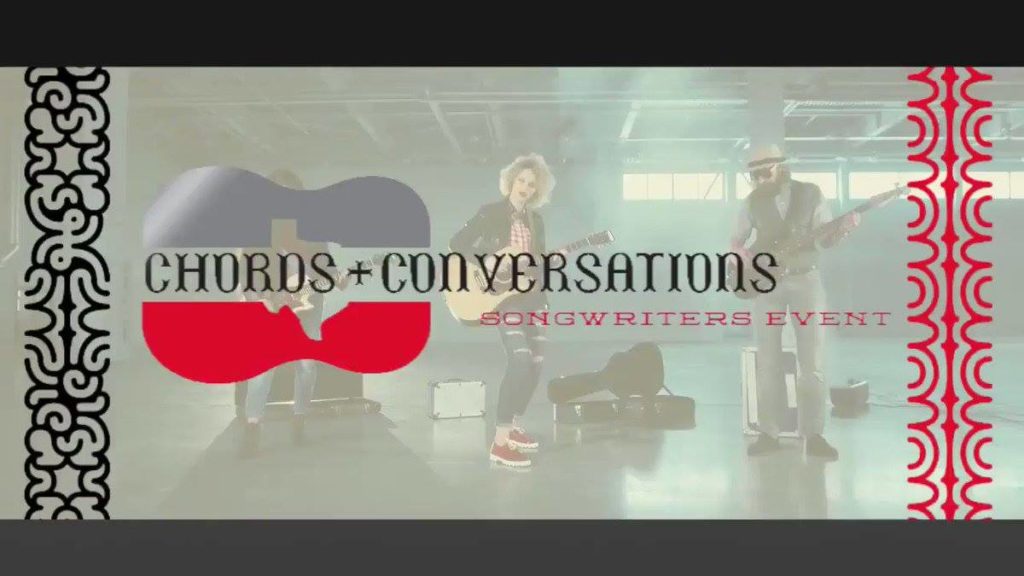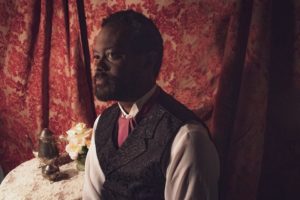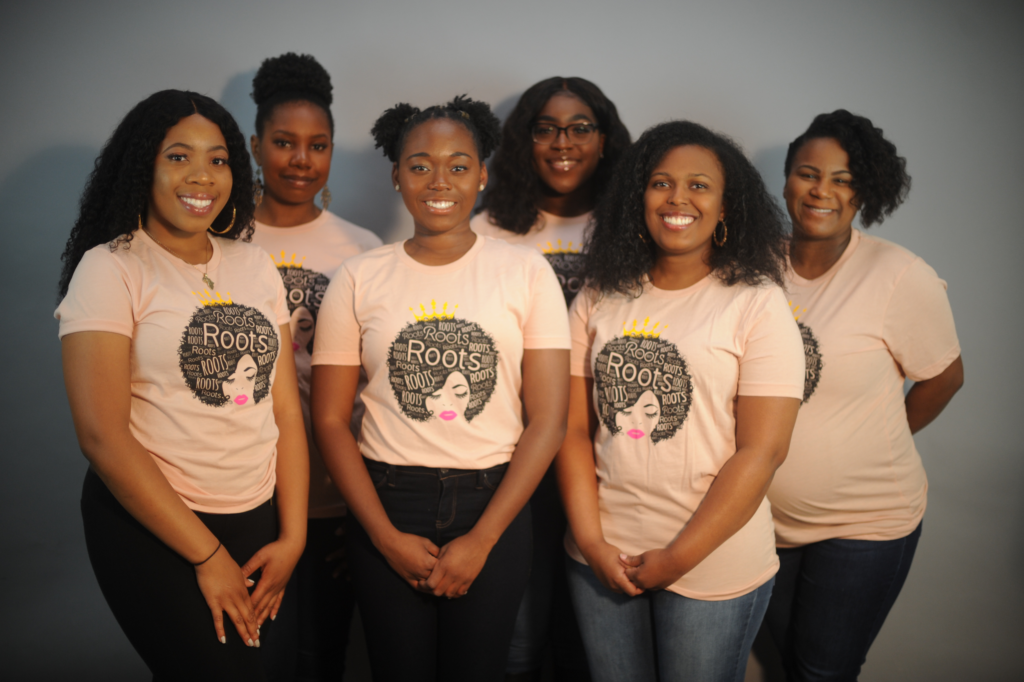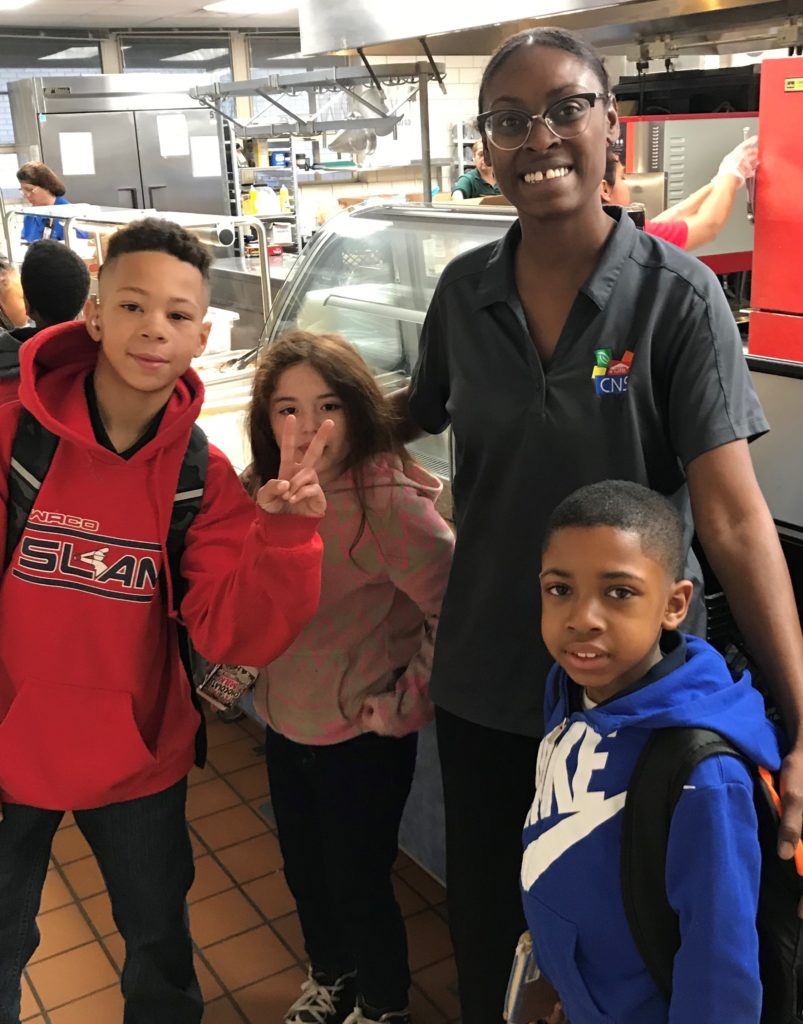By Summer Shine
Most people are affected by alcoholism or addiction in one way or another, whether it’s their own struggle, or a family member or a friend. The disease of addiction and alcoholism has infiltrated our everyday lives. It’s become so prevalent that the CDC proclaimed the opioid crisis in northern states is becoming a national crisis. According to a recent study by the Surgeon General’s office, 1 in 7 Americans suffer from drug or alcohol addiction. Many are touched, but few know what help there is for people who have this disease.
When I decided to get sober in 2013 I, fortunately, had previous experience with recovery and family and friends who were still willing to help. Not all who are afflicted are as lucky as I was. Many find themselves without resources or on long waitlist to get into any sort of treatment facility. Another challenge is that after a short term stay, typically 30-60 days, clients in recovery are expected to figure out a new lifestyle, housing and a recovery plan, with very little assistance. This becomes a major turning point for many people who are seeking long term recovery. What are they to do? Where are they to go? Who is their new support system? These can be stressful and confusing times.
Sober living communities are popping up all over the country as solution to this problem. These homes offer safe, affordable housing in an environment where a recovery lifestyle is commonplace, and mistakes are used as learning tools. Most Sober Living Houses (SLH) require participation in 12-step recovery programs, have straight forward house rules and adhere to probation requirements.
Another study by National Center for Biotechnology Information shows that people in recovery who live in short-term housing for 6-9 months after treatment have a 70% better chance of staying sober for 2 or more years than people who go straight back into old environments.
In 2015 when Sunshine Recovery House opened its doors, there were 5 sober living houses for men in the Waco area and none for women. Historically women are underserved both in addiction recovery and in mental health services. Being a woman in recovery and having many close female friends who are both in recovery and have mental illness, I found the lack of resources disturbing and appalling.
Not being one to take the sidelines when there is a problem to be solved, I addressed the issue and opened a sober living house here in Waco for women! We currently rent 2 small houses close to the old Hillcrest. We have nine beds and are usually full with a waitlist. We recently formed as a nonprofit organization and are raising money to purchase one large house close to downtown that will house 12-14 women and host a live-in house manager.
Waco has been an amazing advocate for Sunshine Recovery House! We’ve seen people come out of the woodworks (figuratively and literally) to show us support and help us expedite the process. It’s been both heartwarming and awe inspiring to see the amount of love people have shown us. More importantly we have been privy to seeing the lives of women in this community radically changed. We’ve seen miracles happen and that is the real game-changer. Women get their kids back, pay off debt, find wonderful careers, go to school, finish probation or clear CPS cases. THESE ladies are the reason we fight through the hard times, and trust me, there are hard times.
I am lucky. I’m lucky to have women in my life who are fighting the same fight I am, who show up to support me and who make the simple, yet hard decision to allow God to change them completely. I’ve learned along the way that I can only keep what I’ve been given, freedom from active addiction, by giving it away.
If you, or someone you love is suffering from addiction or alcoholism, know that there is help. There are 2 treatment facilities in the Central Texas area and a whole host of them in DFW and Austin. More sober living houses are being opened and often I am seeing young people get sober before they have had to suffer some of the same consequences that many have. It’s hopeful and magical and God induced. Some may say it’s a lofty goal to want to eradicate addiction and alcoholism all together, but why not try?
Rollin’ 4 Recovery

Join us March 23rd for a night of laughter, music, food, fun and friends. Comedian Shayne Smith is unapologetically goofy and recants his experiences through hilarious rants about life as a real gangsta….er, geek! Hear some sick beats laid down by Waco’s own Ryan Thomas as he takes us on a lyrical journey through interpretive spoken word, also known as rap. Enjoy a delicious meal provided by Waco’s #1 food truck Club Sandwich and signature mocktail beverages provided by Luna Juice Bar. Not to mention the savage live auction items up for grabs. Trust us, you won’t want to miss this night! If you’d like to mail a check for sponsorship or tables please mail to: Sunshine Recovery House 1516 Austin Ave Suite 3 Waco, TX 76701 Rollin’ 4 Recovery
- March 23 – 7 PM
- Brazos Event Center, 520 Elm Ave.
- General admission $50 – $70. VIP and Table Sponsor opportunities available. Click here for Tickets: Rollin 4 Recovery.

Summer Shine is Owner / Operator / General Juice Slinger at Luna Juice Bar and a Hip Hop Dancer at God’s Great Kingdom.
The Act Locally Waco blog publishes posts with a connection to these aspirations for Waco. If you are interested in writing for the Act Locally Waco Blog, please email [email protected] for more information.

WACO, TX – The second-annual “Chords & Conversations” Songwriters event is set to return on March 30 at the Waco Hilton and will feature three Nashville songwriters who will perform acoustic versions of their hit songs in support of Texas Tech University Higher Education Teaching Site at Waco, directly benefiting Waco-campus students through scholarships.
According to Dr. Lewis Snell, director at TTU Waco, this event is a rare opportunity for music goers to connect with three of the most acclaimed hitmakers in the music industry in an intimate, live performance and discover the stories behind the songs.
“Not only will each artist perform acoustic versions of some of their most well-loved compositions, but they will also relate stories about the people, places and circumstances that inspired those songs,” Snell explained. “More importantly. The event will give you an opportunity to support—in a powerful way—local college students who are pursuing their dreams.”
Set to perform are Nashville Songwriter Hall of Fame member Bob Dipiero, three-time
Grammy Nominee Lee Thomas Miller, and “Song of the Year” Nominee Wendell Mobley, who have penned more than 30-combined chart toppers, including Blue Clear Sky, Take Me As I Am, The Impossible, Fast Cars and Freedom and How Country Feels.
The event will start at 6:30 p.m. and include a pre-show reception catered by Hilton Waco’s executive chef Nathaniel Gay, the performance, and then conclude with an after-show reception where visitors are invited to mingle with the artists over coffee and dessert.
Sponsorship opportunities are still available for this event. For more information, please contact Lewis Snell at 254-299-8288 or email at [email protected]. Individual tickets for the event are now available for $150 each and can be purchased at https://www.depts.ttu.edu/waco/chords-and-conversations/ or visit the Facebook page @TexasTechWaco.
By Matthew Hoffman, MA, BCC
We began, about three years ago, the “Good Friends Volunteer Spiritual Care Program” out of a conviction that within our city, there is a “community of healers,” who if given proper training, in some very basic spiritual care and visitation ministry, under the help and guidance of our professionally trained Staff Chaplains, could come into the hospital context and make a difference in the lives of people in need.
Since we began this volunteer program, with now, visits numbering into the thousands, having taken place, this hypothesis has born itself out to be true, that there are everyday people, who can stand as “healers,” in sacred places, like that of a patient’s room, and by doing so, can make a profound, health giving difference in the trajectory of people’s lives.
Here in Waco, we are seeking to take the “Good Friends” program and pilot a new version of this to help mobilize volunteers from local bilingual/Spanish speaking congregations to the help advance the care of our Spanish only speaking patients. Coming into a hospital can be a very anxiety producing experience. How much more so if you speak a different language than the majority of your healthcare team? By being a member of the Good Friends program as a bilingual volunteer you will be a welcomed presence offering prayer as desired, a listening ear and making people aware of the other spiritual care resources that would be available to them.
- Through the Good Friend Program you will be trained in areas of:
- How to minister to the spiritual and emotional needs of the sick.
- Discover the unique nature of hospital ministry.
- How to care for people of diverse religious traditions and cultures.
- Being a ministry of presence
- The ministry of active listening
If you would like to be part of the Good Friends program as a bilingual volunteer, or if you just want to grow in your ability to care for sick within your own faith community (for pastors, who would like to send members to this training for added help in their congregation, please do so!), join us on Monday, March 25 from 1-430pm at the Allison Auditorium at Baylor Scott and White Health-Hillcrest Hospital. You can RSVP to Chaplain Matthew Hoffman @ [email protected]

Chaplain Matthew Hoffman is a Board Certified Chaplain who serves at the system level as a Manager of Baylor Scott and White Health’s Faith In Action Initiatives (CTX). He oversees the development of various spiritual care programs in many of BSWH’s hospitals within its Central Division, as well as its local and international humanitarian aid and medical missions programs.
The Act Locally Waco blog publishes posts with a connection to these aspirations for Waco. If you are interested in writing for the Act Locally Waco Blog, please email [email protected] for more information.
Waco, TEXAS (March 11, 2019) Deep in the Heart Film Festival collaborates with industry professionals and government officials to bring innovative film education to Waco. On Saturday, March 30th the Deep in the Heart Film Festival presents three educational sessions that dive into the art and business of filmmaking in Central Texas. Festival VIP pass holders receive access to these sessions in addition to all films and parties. Individual tickets for the sessions are also available for the first time through the Deep in the Heart website: www.deepintheheartff.com
Super 8 filmmaking workshop

This Super 8 filmmaking workshop, presented by Kodak, covers a brief history of Super 8, and focuses on using Super 8 film today – discussing (and showing) films and music videos, highlighting what film stocks are available, and diving into how to find and choose the best camera for your projects. In addition, attendees get a sneak preview of the new, yet-to-be-released, Kodak Super 8 camera with digital display. Deep in the Heart is one of the first festivals to profile the camera. Plus, attendees get hands-on experience filming with super 8 cameras and film.
About Kodak Presenter, Norwood Cheek:
Norwood Cheek’s passion for filmmaking began when he was 15, making in-camera edited Super 8 short films. He combined his love for film with music and began shooting and directing music videos – primarily on Super 8 and 16mm. He has directed more than 80 music videos for such artists as She & Him, the EELS, SuperChunk, AFI, Ben Folds Five, French Kicks and Squirrel Nut Zippers. He directed and ran the Flicker Film Festival in Chapel Hill and Los Angeles from 1994-2010 and wrote the Flicker Guide to the World of Super 8 filmmaking. He has led Super 8 filmmaking workshops at festivals, art centers, museums and universities around the world.
Session is March 30th at 1:30 pm. Tickets available at www.deepintheheartff.com
Panel Discussion

Sam Henderson, Baylor University Lecturer of Theater and Film, facilitates a panel discussion including Texas talent agents and working actors from both Austin and Dallas. This is an open and informative discussion on how to land roles for both TV and film in Texas. With shows like “Queen of the South” and “Fear of the Walking Dead” currently filming in Texas, this panel will be of great interest to Waco area talent looking to appear on screen.
Session is March 30th at 3:30 pm. Tickets available at www.deepintheheartff.com
Film locations Tour

The Film Locations Tour is a guided tour of Waco film sites for film scouts and filmmakers, conducted by the Waco Film Commission and Convention & Visitors Bureau. The is a driving tour of Waco aboard a motorcoach with possible stops at the Historic Village, Brazos Park East, and other locations. Attendees will have all their questions answered regarding filming Waco, find out about the benefits of production in Central Texas, and network with attending filmmakers.
The session is March 30th at 10:00 am. This is a free event, but tickets are required. Please reserve your seat through www.deepintheheartff.com.
For further inquiry, please contact Festival Co-Director, Samuel Thomas at [email protected] or 817-800-0643
By Gabrielle Chaney
The idea of creating a natural hair club at Baylor University started in my 2001 Honda in Spring 2017. My friend, and now former president of ROOTS NHC, Victoria Ellison and I were casually discussing how it would be a great idea to create an organization on campus dedicated to promoting, celebrating, and educating people about black natural hair on campus. Three weeks later I start receiving text messages and emails about becoming an officer on campus. I was shook! We started something that I would never have thought would be possible at a predominantly white institution.

The start-up of ROOTS NHC was not easy. In the beginning, many students did not understand our purpose and were skeptical about having a new organization on campus, administration did not understand our vision.
To gain traction we knew we needed to find something different to attract people to attend our meetings. One huge initiative, which we still continue to do, was providing natural hair products and samples to students who join our organization or students in need. “Why not provide something useful and cost efficient for students to try in their hair?” we thought. In the black community, natural hair products are not cheap. Quality brands of natural hair shampoo and conditioners for black hair can cost over $20, so our goal is to try and provide opportunities for students to win prizes, hair products & samples that natural hair companies provide us, at every meeting. We have been blessed to receive donations and support from huge companies, such as Aunt Jackie’s Natural Hair Products, As I Am, Curls, Cantu, Palmers, Do Gro and many more.

The concept of our meetings is that hair is the starting point for larger discussions. We have discussed issues such as colorism in society, natural hair in the newsroom and journalism, natural hair in the business world, hair education, and even hot topics such as culture appropriation and the historical roots of African hair. The conversations dive deeper into loving the skin God has blessed us with, appreciating the hair on our heads, and educating non-blacks on the importance of black culture.
As a result of these conversations we had the idea of creating a hair event. We hosted the ESSENCE Hair Show & Expo at Baylor in the spring of 2018. We worked to bring vendors and to have hairstylists showcasing their work. At the event we provided giveaway products, free haircuts, and performances.
This year we will be hosting the 2nd Annual SPRING FEST Hair Show & Expo at Baylor University. Our goals in planning this event are to invite the entire Baylor and Waco community to witness something new and unique in Central Texas. The event has gained traction from start-up businesses, entrepreneurs, and local businesses. We will have vendors from Waco, Dallas, Houston, and Austin that specialize in natural hair products, hair accessories, skin care, and so much more. We will be hosting even more performances, vendors, bigger prizes, free food and haircuts than last year. All of the ticket sales will be donated to the Family Abuse Center of Waco, Texas.

I am blessed to have this opportunity and grateful for how far our organization has come in the past two years at Baylor. As I close my senior year, I only pray our work as servants of God will continue through this organization.
ROOTS Natural Hair Club is more than just a hair club. We want every attendee at our meetings and events to leave feeling loved and appreciated. I pray, as a president and advocate for black culture, that I have helped cultivate leadership in my officers and freedom of expression in all our members and attendees. We have great ideas and I know that, if we have the drive, ROOTS NHC can reach even further in accomplishing our dreams.
If you are interested in attending the SPRING FEST Hair Show & Expo it is on March 30th, 2019, from 2-6pm at Baylor University’s Bill Daniel Student Center. Tickets are $2 presale and $5 at the door. You can purchase tickets through www.Eventbrite.com, type in “SPRING FEST Hair Show & Expo.” All ticket sales will be donated to the Family Abuse Center.

Gabrielle Chaney is a senior Athletic Training major at Baylor University. She is from Missouri City, Texas, and originally from Lafayette, Louisiana. Her career goals are to work as an Athletic Trainer and Physical Therapist for a University. Eventually, she would like to have her own business. She loves getting to know people, watching sports, music, cooking, and also discussions on social justice and activism. One of her big passions is ROOTS Hair Club at Baylor University. “This organization allows me to have a voice on campus and express the love of hair and community!” she says. One of her other passions is leadership and working on becoming a better leader. “I believe Baylor University has cultivated an atmosphere where my leadership abilities have had room to grow and shine,” she says. “I am grateful for my time at Baylor and ready to see what the world has in store for me in the future.”
By Brandi R. Ray, Ed.D
The Heart of a Teacher Educator
When I was 9 years old President Ronald Reagan announced that the first citizen to go into space would be a teacher. This teacher would be a part of the Challenger Mission that was set to launch in January of 1984. The teacher that was eventually chosen for the mission was Christa McAuliffe, a social studies teacher from New Hampshire. She spent a year away from her classroom preparing for the Challenger Mission and training for space travel. I followed the news intently that year, watching TV clips about her preparation. Nine-year-old me believed a teacher, a professional lifelong learner and scholar, could do anything…even travel to and teach in space.
Fast forward ten years to January 1994. The 18-year old me was a senior at Coahoma High School, set to graduate third in my class of about 75 students. Although I was a good student, I was unsure of what I wanted to be or what major I should choose for college. I was meeting with my high school counselor. “A teacher,” I mentioned that day, “I think I could be a great teacher.” The counselor looked up at me with a concerned gaze. “Brandi, how about becoming lawyer? Major in Communication then go to law school. You can do so much more than just teach.” She encouraged me to “set my sights high,” teaching could be my “fallback.”
As I pursued my career journey, that counselor became one of many who referred to teaching as my “fallback.” Boy were they wrong!
Teaching, and now teacher education, are my purpose. Teaching is my calling, my vocation, my chance to be a difference maker, a change agent. As a teacher I have had the opportunity to continually learn and be creative, to profoundly impact the lives of children, to contribute to my community, and to work in an environment that is never dull. For me, teaching was and is a rebellion. Teaching is a way to impact others and transform myself on a daily basis. I can be a lifelong scholar and student, seeking new knowledge my entire life. I can work and always be relevant. Teaching is my chance to change the future. As the author Henry B. Adams once said, “A teacher affects eternity: he can never tell where his influence stops.” Teaching is power.
The Call to Teach
Each day, over 350,000 teachers in the state of Texas enter their classrooms and work tirelessly to educate our children. In a recent opinion column for the Dallas Morning News two of my personal educational icons, Wesley Null and Diane Ravich, discussed educational reform in Texas. They noted that: The heart of any school is the teacher. The only way to ensure that every Texas child receives a quality education is to place a well-educated, well-prepared teacher in every classroom. That truth will never change.
The demand for qualified teachers is growing desperate. According to Texas Education Agency (TEA) estimates, Texas will require a 26% increase in teachers to keep up with our rapidly growing population. According to Jessica Attas, Vice-President of Public Policy for the Greater Waco Chamber of Commerce, there are some tremendous challenges in teacher recruitment and retention in our own community. Citing a recent InvestED TX report, Attas notes that the higher education teacher pipeline is down 22% since 2010, while the K-12 student enrollment growth has increased 10%.
The Call to Act
This data translates into a very clear local directive. Simply stated: If we expect to have the excellent, well-prepared teachers required to meet our needs in the greater Waco community, we need to start growing our own.
We need some of our best and brightest Waco area students to become teachers. We need an excellent, affordable, local option for those students to get the higher education they need to become high-quality teachers. We need the best teaching professionals in our local school districts to mentor these teacher candidates. Then we need these brand new, well-trained teachers to go to work for our local school districts and stay here in the Waco area to build a bright future for our community.
TechTeach

In September of 2018, I was hired by Texas Tech University Waco and Texas Tech University College of Education to begin the work of establishing a quality, affordable teacher education program in Waco.
That program, “TechTeach,” is a clinically intensive, competency-based degree program designed to prepare teachers who will improve the academic achievement of K-12 students. New teacher candidates will start working in classrooms in their first semester of college. They will use state of the art digital technology to capture their instruction. Then they will use this video footage to evaluate and improve their teaching effectiveness.
TechTeach candidates will work in partner districts alongside an experienced, handpicked mentor teacher. This co-teaching will involve working together to plan, carry out, evaluate and adjust instruction in whole-group and small-group settings.
Our program is an important one. It is rigorous and it provides an affordable educational opportunity for would-be teachers in our community. We expect our graduates to enter the classroom confident in their ability to teach and with very little debt. This can have a profound effect on teacher retention.
High quality teaching in our local classrooms is a critical need. Institutions of higher education have a responsibility to recruit and train a strong, diverse pool of teacher candidates who can meet that need. I believe our program at Tech Waco will do just that. I am a teacher. Teaching has never been my “fallback” profession. I am proud to say that teaching and teacher education have been my lifelong rebellion. Just as Christa McAuliffe said during an interview before the Challenger Mission, “I touch the future: I teach.”

Dr. Brandi R. Ray is the Site Coordinator / Instructor for the College of Education at Texas Tech University Waco. Receiving her doctorate in Curriculum and Instruction, Brandi has worked in teacher education at the university level for over 15 years. She has been married to her husband Lee for 18 and half years and has three children, Aidan who is 16 years old, Lily who is 11 years old, and Leighton who is 6 years old.
The Act Locally Waco blog publishes posts with a connection to these aspirations for Waco. If you are interested in writing for the Act Locally Waco Blog, please email [email protected] for more information.
Notes:
- “Remarks at a Ceremony Honoring the 1983–1984 Winners in the Secondary School Recognition Program”. The American Presidency Project. August 27, 1984.
- Texas Education Agency, Texas Educators Certification: https://tea.texas.gov/Texas_Educators/Certification/
- Projections Central, Long Term Occupational Projections: http://www.projectionscentral.com/Projections/LongTerm
- Texas Workforce Commission: https://twc.texas.gov/
- US Bureau of Labor Statistics, May 2015 Occupational Employment and Wage Estimates, Texas: https://www.bls.gov/oes/current/oes_tx.htm
- The heart of a school is its teachers, and teachers should be at the heart of school finance reform By Wesley Null and Diane Ravitch https://www.dallasnews.com/opinion/commentary/2019/02/10/heart-school-teachers-teachers-heart-school-finance-reform
- Teachers aren’t losers. They’re lifesavers. By Kristin Karnitz. https://www.pbs.org/newshour/education/opinion-teachers-arent-losers-theyre-lifesavers
By Craig Nash
When asked what her favorite part of the job is, Lakaisha Clark, the cafeteria manager at Parkdale Elementary School in Waco, gestures toward a room full of kids eating breakfast and replies, “This.”
“I don’t know what other people say about the kids here, but when I look out across this room, what I see are a lot of leaders,” she said. She loves speaking to kids individually and giving them encouragement to see in themselves what she sees in them.

That ability to see the potential in others is likely one of the reasons she is in her current position. When this school year began, she was hired as a cafeteria worker at Parkdale. The management with WISD Child Nutrition Services quickly saw her leadership abilities and promoted her to Cafeteria Manager. The school has seen a drastic increase in both attendance and breakfast participation this year, which has had Clark overseeing a lot of changes in her cafeteria service. New workers have been added and physical changes to the building were made to accommodate an extra line for students to enter in.
She is at the school by 6:00 am and by the time she leaves around 3:00, has served Parkdale students over 450 breakfasts, 600 lunches, as well as afternoon snacks. All of this while managing a team of workers, placing and receiving orders, and tending to regulations associated with operating a USDA program. According to Assistant Principal Wendy Moulds, Ms. Clark does all of this with a smile on her face and an infectious, upbeat personality that lifts the spirits of students, faculty and staff.
At the Texas Hunger Initiative, we are convinced that addressing poverty and food insecurity requires a multi-pronged approach that includes policy makers, business, community leaders and non-profit organizations. But the foot soldiers on the front lines of ending childhood hunger are the Child Nutrition departments at our public schools. Food Service directors of these departments, like Cliff Reece at Waco ISD and Dave Thiel at La Vega ISD, oversee massive, complicated programs that have one goal in mind: To feed children. They are often the unsung heroes in our community, working behind the scenes to provide nutrition assistance to tens of thousands of kids in the Heart of Texas Region.
Usually food insecurity in families means that meals are spread thin, or difficult decisions have to be made about purchasing choices. But occasionally it means that school breakfast will be the first meal a child has eaten since they left school the previous day. Cafeteria Managers and food service workers like Lakaisha Clark recognize this, which gives them a sense of mission and intentionality about the work they do.
The first full week of March every year is National School Breakfast week, which is set aside to recognize the importance school breakfasts have in all of our communities. This week in the Heart of Texas, student athletes from Baylor visited campuses in Waco and La Vega ISD’s to celebrate the role Child Nutrition Departments play in the health and wellness of our kids. You should consider joining them in this celebration by taking some time this month to speak a word of encouragement to the Child Nutrition staffs of our local schools. Their work is done with great care and a deep love for the children in our communities.

Craig Nash is the Regional Manager for Child Hunger Outreach at Baylor’s Texas Hunger Initiative. He enjoys talking and writing about Waco, Country Music, and Faith. He blogs at 17dutton.com.
The Act Locally Waco blog publishes posts with a connection to these aspirations for Waco. If you are interested in writing for the Act Locally Waco Blog, please email [email protected] for more information.
Money, Money, Money! On Saturday March 9, 2019, Alpha Kappa Alpha Sorority, Inc., Delta Alpha Omega Chapter will host its First Annual Building Your Economic Legacy Conference. Ten workshops will be offered centered on building your wealth. Participants will be able to select from workshops including topics such as:
- Financial Planning
- Credit Building and Repair
- Home Ownership
- Health Care and Senior Planning
- Building your own business and brand
Dynamic presenters are prepared to provide information and answer any questions attendees may have.
The conference is Delta Alpha Omega chapter’s implementation of Alpha Kappa Alpha Sorority, Inc., International Program Target 3 which emphasizes financial planning, asset accumulation, and wealth building in communities that have traditionally struggled in these areas. The Conference was the brainchild of Rosemarie Tatum, the chairman of Target 3, along with her committee members, and Delta Alpha Omega’s Vice President and Program Coordinator, Rolonda Burns.
During Delta Alpha Omega’s annual program planning meeting in August, The Target 3 committee posed this question, “What are the biggest obstacles to building wealth in economically disadvantaged communities?” Resoundingly, the chapter responded, “Access to information and opportunities.” The Building Your Economic Legacy Conference is designed to address these obstacles. It will provide the community with one-stop-shop access to information and resources geared to building your financial security.
“It is not often that we talk about wealth building in African American communities. Money is indeed a sensitive subject, but a necessary subject if we want our communities to flourish,” says Connie Nichols, President of Alpha Kappa Alpha Sorority, Delta Alpha Omega Chapter. “We want to break that silence and begin conversations that empower our community, to support its businesses, and establish a lasting legacy,” she continued.” “It is Delta Alpha Omega’s hope that by providing access to information on wealth building, the community members will seek out opportunities to start the process of planning for a healthy and successful financial future,” says Rolonda Burns.
Delta Alpha Omega Chapter believes that this conference will truly benefit the Waco Community by allowing community members to select topics that are important to their financial success and learn how to be strategic in planning. “There is no better time than now to start planning for tomorrow,” says Rosemarie Tatum.
The Building Your Economic Legacy Conference is free and open to all who would like to start the process of planning for their financial future. It will take place at Carver Middle School, 1601 J. J. Flewellen, Registrants can select up to two of the ten concurrent workshop session to attend beginning at 8:30am and concluding at noon. Lunch will be provided to attendees at no cost. You may contact Rosemarie Tatum at [email protected] for additional information and to register. There is no better time to start planning than now!

Alpha Kappa Alpha Sorority, Inc., is the oldest Greek letter organization established by women of African American descent. Beginning with the vision of nine college students on the campus of Howard University in 1908, the sorority has flourished into a globally-impactful organization of nearly 300,000 college-trained members, bound by the bonds of sisterhood and empowered by a commitment to servant-leadership that is both domestic and international in its scope. Chartered in 1946, Delta Alpha Omega Chapter has continually served the Waco community, implementing programs that are designed specifically to address the local needs of the Waco community.
(As I’m sure most of you probably know, one of our Prosper Waco community goals is “McLennan County residents will live healthier lifestyles and access the best available care.” With that in mind Act Locally Waco is teaming up with Better Living for Texans to bring you a monthly blog post full of tips for healthy living. For more of the posts in this series, click here: Better Living for Texans. – ALW)
By Kelli Niemeier
Like most people, you’ve probably heard that physical activity, including exercise, is good for you. If you’re already active, keep up the good work! It may even be time to push yourself a little harder, try a new activity, or find new ways to add exercise to your daily life.
Why is Physical Activity Such a Big Deal?
Exercise and physical activity are important to the physical and mental health of almost everyone. Being physically active can reduce the risk of developing some diseases and disabilities later in life. In some cases, exercise is an effective treatment for many chronic conditions. For example, studies show that people with arthritis, heart disease, or diabetes benefit from regular exercise. It can also help with high blood pressure, balance problems, or difficulty walking.
What’s the Difference Between Physical Activity and Exercise?
Both terms refer to the voluntary movements you do that burn calories. Physical activities are activities that get your body moving. This could be gardening, walking the dog, raking the leaves, or taking the stairs instead of the elevator. Exercise is a form of physical activity that is planned, structured, and repetitive such as weight training or an aerobic class. Both physical activity and exercise are important and can help improve your ability to perform everyday activities. In fact, exercise and physical activity benefit every area of your life. They can:
- help maintain and improve your physical strength and fitness
- help improve your ability to do the things you want to do,
- and help you improve your mood and overall well-being.
You probably noticed the key word is you! Whatever your abilities are, the key is to match your physical activity to your own needs and abilities. For some people, swimming can be a great alternative to running for an aerobic exercise. For others, a slow walk around the corner and back is a big achievement.
As a guideline, the Centers for Disease Control (CDC) recommends that we get 30 minutes of physical activity per day. Does that mean that you need to go on a 30-minute run? No! You can break up your physical activity throughout the day such as 10-minute intervals. Remember to find activities that you enjoy. If you don’t enjoy what you’re doing, more than likely, you won’t stick to it! Find friends in your community to be physically active with. Making exercise and physical activity social could help to reinforce your behaviors.
What’s New with Physical Activity in Waco?
Get into the habit of getting healthy with a FREE 8-week Walk Across Texas Program. The Texas A&M AgriLife Extension Service created this annual program to help Texans increase physical activity. The program is designed for teams and individuals to register to walk the 832-mile goal of essentially walking across the great state of Texas. This program is ideal for families, friends, children, and organizations to encourage physical activity. For questions, FAQs, and to register click here http://walkacrosstexas.tamu.edu/. Grab your tennis shoes because Walk Across Texas officially started on March 4 here in McLennan County!
Pairing Physical Activity with a Healthy Lifestyle

Of course, we can talk about the importance of physical activity all we want, but let’s not forget the role that other aspects of our lifestyle play into our overall well-being. This includes getting 8 hours of sleep every night, finding ways to reduce stress, and eating a healthy, balanced diet. For a healthy diet, try to increase fruit and vegetable consumption, eat sensible portions, and enjoy your food! Check out this stuffed bell pepper recipe that is sure to impress! (BONUS: This recipe serves up to 8 people with a cost per serving of $0.89!)

Kelli Niemeier is a Nebraska native who is pursuing a Master of Public Health degree at Baylor University. She is currently an intern with Texas A&M AgriLife Extension Service in McLennan County and is working with the Better Living for Texans program. She is passionate about empowering communities to improve health and well-being. Kelli has learned to call Waco her home away from home. She especially enjoys the small-town atmosphere and charm of Waco and trying local food. Kelli is also an adventurer at heart who loves to visit U.S. National Parks!
By Cheyenne Atchison
Each year, McLennan Community College hosts Family Fun Day for the Waco community. Neighborhood families are encouraged to bring their kids to the Bosque River Ballpark Complex to receive free admission into both the baseball and softball games. On March 23, the Highlanders and Highlassies are taking on North Central Texas College and Temple College, respectively.
In addition to the athletic games, MCC will have a variety of activities for families to partake in, including inflatables, games, and giveaways. This year, Pokey O’s will be available to serve desserts to visitors. Family Fun Day is a way for MCC to interact with the surrounding community and is only one of the many ways in which MCC engages with citizens of Waco and Central Texas. Throughout the year, students and faculty participate in multiple philanthropic events to support and better Central Texas.
This past January, MCC Athletics raised money for the American Cancer Society. Rather than competing against other colleges, each team competed against each other to see who could raise the largest amount in donations. Teams set up tables in the Learning Technology Center for students and faculty to contribute. Those that donated could sign their name or a loved one’s name on a Highlander card that is on display for the rest of the season. Tables were also set up outside of athletic games to collect donations from attendees. At the end of the month, the baseball team raised the most money for the American Cancer Society and won the competition.
Starting in 2016, the men’s golf team began a yearlong fundraiser for the Folds of Honor Military Tribute program. This program provides educational scholarships for spouses and children of fallen and disabled service members. By June of 2018, the team raised $1000 to support military families and their endeavors.
The women’s basketball team supports Play4Kay, raising funds for the Kay Yow Cancer Fund. Coach Kay Yow, the head coach of the North Carolina State University women’s basketball team, was first diagnosed with breast cancer in 1987 and passed away in 2009 after her battle with the disease. The Kay Yow Cancer Fund is an organization that helps women affected by all forms of cancer. Funds are given toward research, prevention and assistance of those currently affected.
Locally, MCC athletics also works with organizations in Waco to benefit those specifically in Central Texas. This year marks the 30th anniversary of Food for Families in Central Texas. Sponsors, such as MCC’s baseball team, will stock the shelves of local food pantries and food banks with non-perishable items. Today, Food for Families has grown to be the largest one-day food drive in the state, serving nine counties within Central Texas.
The Highlassies softball team volunteered with No Limitations, another local charity established in July 2014 to help those who face developmental or physical challenges. Through No Limitations, affected individuals can take part in various activities, including team sports. By participating in social programs, those with disabilities can feel more included in the community and learn valuable skills. Through partnerships with charities and organizations like No Limitations MCC athletics gives back to the community.
“The athletics department at McLennan is always finding ways to reach out to Waco and the surrounding areas,” Jennifer Norman, Associate Director of Marketing and Communications said. “Community engagement allows us to show our appreciation for those beyond MCC.”

Cheyenne Atchison is a junior at Baylor University studying Marketing and Public Relations, and currently serves as an intern in the Marketing and Communications Department at McLennan Community College.
The Act Locally Waco blog publishes posts with a connection to these aspirations for Waco. If you are interested in writing for the Act Locally Waco Blog, please email [email protected] for more information.
